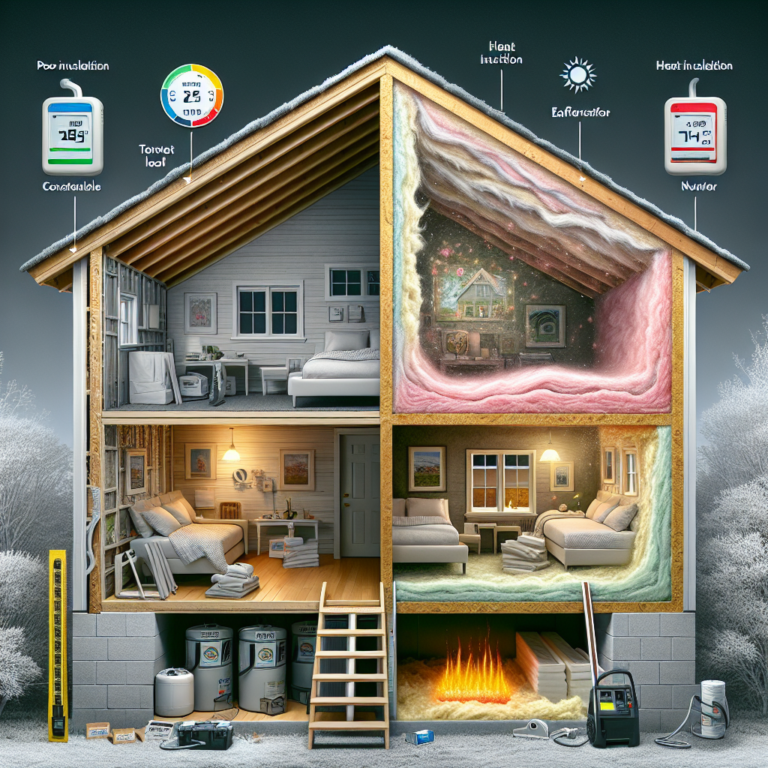Revolutionize Your Home with Cellulose Blown-In Wall Insulation
Introduction
Transforming your home into an energy-efficient haven starts with choosing the right insulation. Cellulose blown-in wall insulation delivers outstanding thermal performance, reduces noise, and supports a greener lifestyle. Made from recycled paper treated with fire-retardant and pest-resistant chemicals, this eco-friendly option seals gaps and voids that traditional batt insulation often misses. In this article, we’ll explore how cellulose blown-in wall insulation can revolutionize your home’s comfort, durability, and energy bills.
H2: Benefits of Cellulose Blown-In Wall Insulation
• Superior Energy Savings: Cellulose insulation achieves an R-value of approximately 3.5 per inch, effectively slowing heat transfer. In winter, it traps warm air indoors; in summer, it keeps the heat at bay. Homeowners typically see up to 20% reductions in heating and cooling costs.
• Eco-Friendly Composition: Made from up to 85% recycled newspaper, cellulose blown-in wall insulation diverts waste from landfills and requires less manufacturing energy than fiberglass or spray foam.
• Enhanced Soundproofing: The dense, fibrous texture absorbs sound waves, cutting exterior noise from traffic, lawn equipment, or neighbors. It also dampens noise between rooms, creating a quieter living environment.
• Fire Resistance and Pest Control: Treated with borate, cellulose insulation resists fire, mold, and insects. In case of a fire, the material smolders rather than ignites, providing critical extra minutes for evacuation. Borate treatment discourages rodents and carpenter ants without releasing harmful chemicals.
• Improved Indoor Air Quality: Free of formaldehyde and other off-gassing compounds, cellulose insulation helps maintain cleaner air. By sealing gaps around windows, doors, and wiring, it also prevents drafts that can stir up dust and allergens.
• Versatility in Application: Whether you’re insulating new framing, retrofitting existing walls, topping off an attic, or filling a crawl space, cellulose blown-in wall insulation conforms to odd shapes and hard-to-reach cavities without major remodeling.
H2: The Process of Installing Cellulose Blown-In Wall Insulation
1. Assessment and Preparation
– A professional evaluates existing insulation levels, wall cavities, and potential air leaks around outlets, windows, and doors.
– Installers seal gaps with caulk or spray foam to maximize the new insulation’s performance.
2. Machine Setup and Material Loading
– Cellulose fibers are fed into a blower machine, where they’re fluffed and propelled through hoses.
– Protective tarps and plastic sheeting cover the work area to ease cleanup.
3. Blowing and Density Control
– Installers insert the hose into small access holes drilled between studs or through attic floorboards.
– They fill cavities to the specified density—typically 3.5 to 4.0 pounds per cubic foot—ensuring no settling will occur over time.
4. Finishing Touches
– Access holes are patched and painted to match surrounding walls.
– Excess fibers are vacuumed, and the workspace is cleared of debris.
– A final inspection confirms uniform coverage and proper density.
H2: Comparing Cellulose Blown-In Wall Insulation to Other Types
• Fiberglass Batts
– Pros: Inexpensive, DIY-friendly.
– Cons: Prone to gaps, skin irritation, lower R-value per inch.
• Spray Foam
– Pros: Excellent air sealing, high R-value (~6.0 per inch).
– Cons: Higher cost, requires specialized installation, potential off-gassing.
• Mineral Wool
– Pros: Fire-resistant, good soundproofing.
– Cons: Heavier, often more expensive, may still leave small voids.
Cellulose blown-in wall insulation strikes a balance: it offers superior air sealing and sound deadening at a moderate cost, all while using recycled content and avoiding harsh chemicals.
H2: Q&A about Cellulose Blown-In Wall Insulation
Q: Is cellulose blown-in wall insulation safe for my family?
A: Yes. Treated with borate, it resists mold, pests, and fire without releasing toxic fumes. Properly installed, it poses no respiratory or health risks.
Q: How long does cellulose insulation last?
A: With proper installation and moisture control, cellulose insulation maintains its R-value for decades. It resists settling and degradation when kept dry.
Q: Can I install cellulose insulation myself?
A: While DIY kits exist, achieving correct density and coverage can be challenging. Professional installers ensure optimal performance, proper sealing, and clean removal of excess material.
Conclusion
Cellulose blown-in wall insulation offers an easy, effective path to a more comfortable, quieter, and energy-efficient home. From significant savings on utility bills to improved indoor air quality and environmental benefits, this versatile solution answers the demands of modern homeowners. Revolutionize your home with cellulose blown-in wall insulation and enjoy enhanced comfort, lower energy costs, and a greener footprint for years to come.












